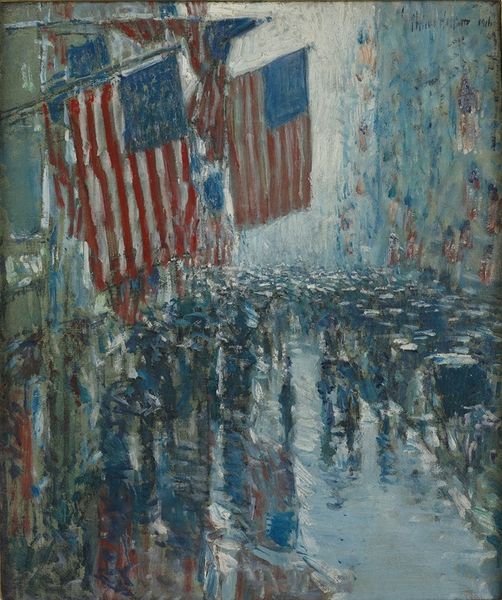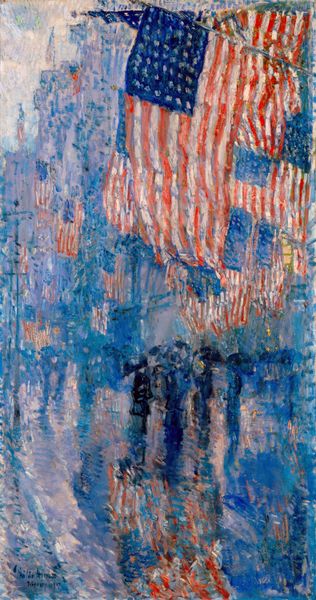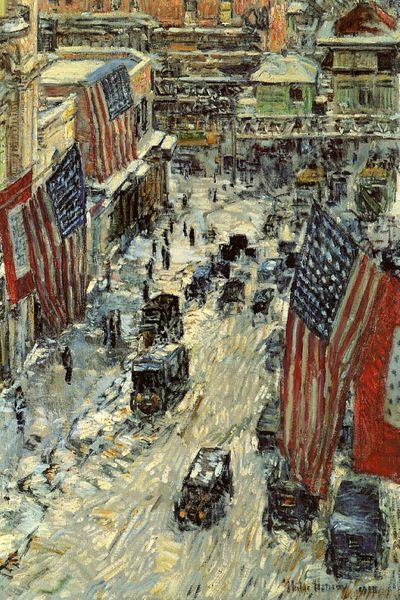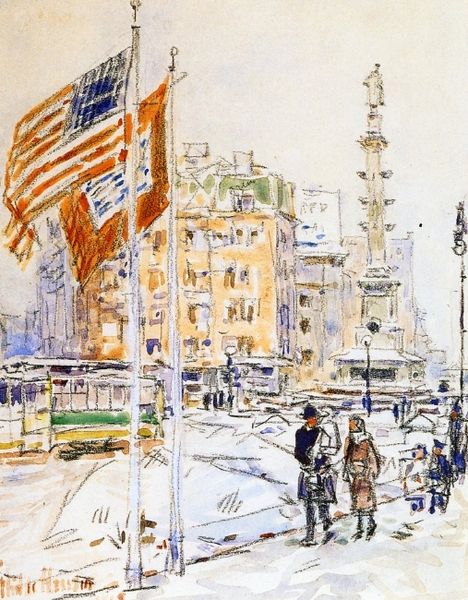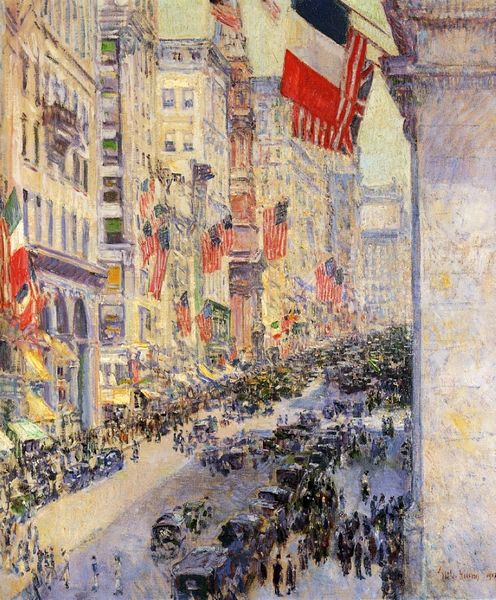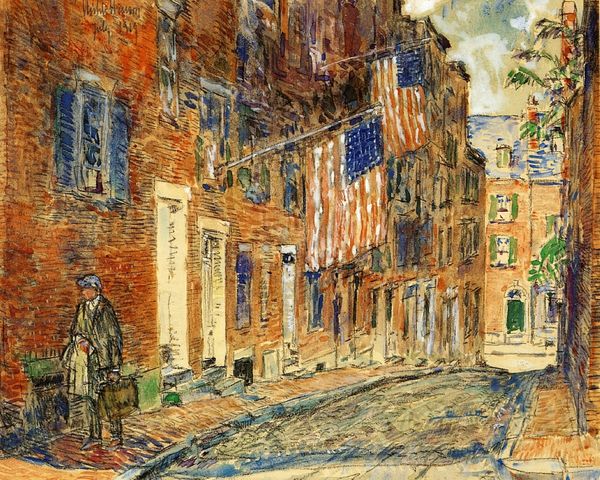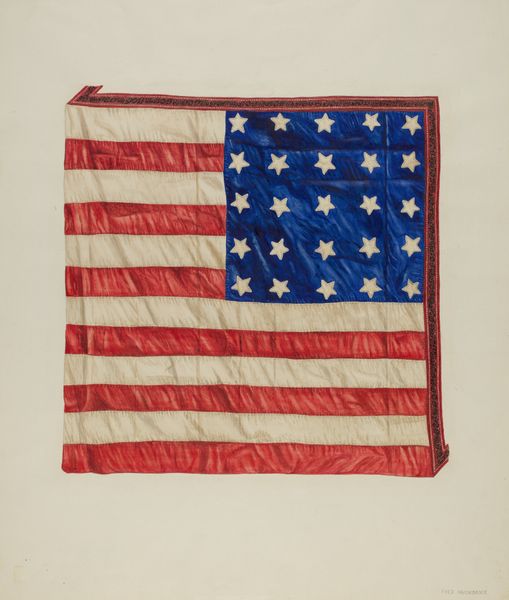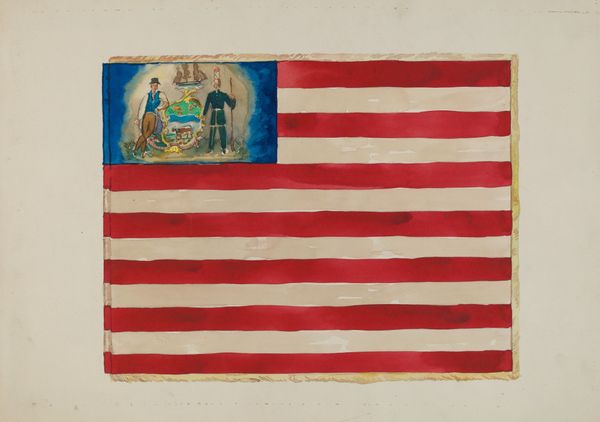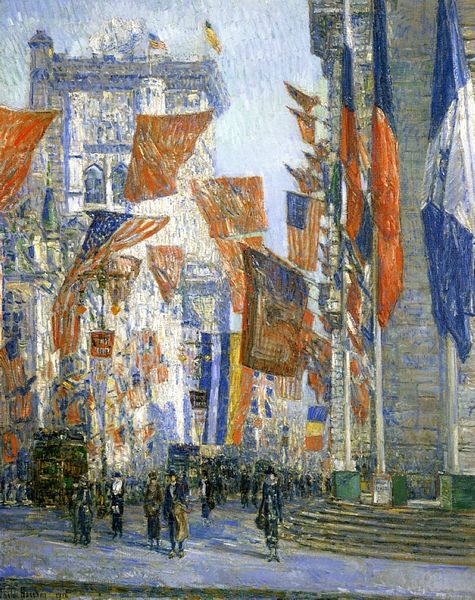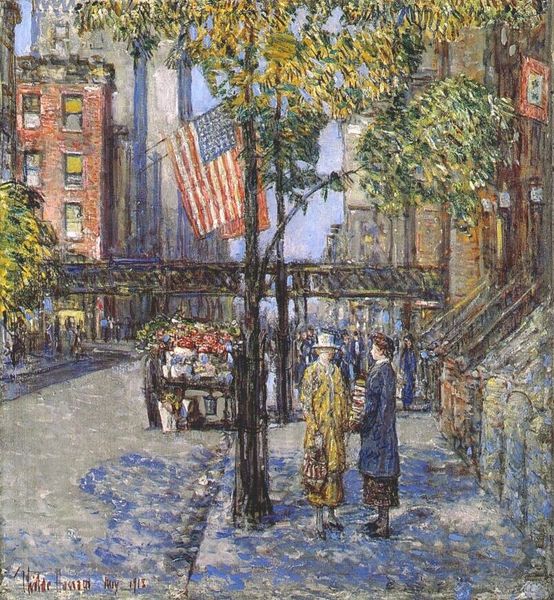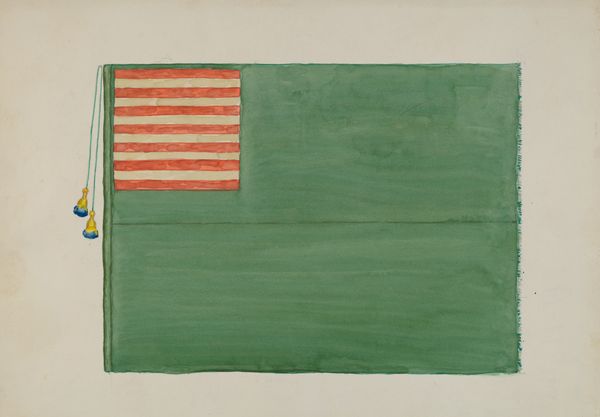
Copyright: Public domain
Editor: This is "The Fourth of July," painted by Childe Hassam in 1916, using oil paints. It gives a dizzying sense of patriotic fervor, almost overwhelming with its repetition of the American flag. What symbols or meanings jump out at you? Curator: Well, the sheer volume of flags speaks volumes, doesn't it? Hassam doesn’t simply depict patriotism; he envelops us in it. But think about 1916: World War I was raging. How might that context, the tension between national pride and global conflict, infuse this seemingly celebratory image with deeper complexities? Editor: That’s interesting – the war definitely adds another layer. It’s not just a simple celebration then. I see now how the flags, almost violently clustered, could represent a kind of forced unity. Curator: Exactly. Notice how Hassam’s Impressionistic style, typically associated with fleeting beauty, is here used to portray something so overtly nationalistic. Does the blurriness, the lack of precise detail, soften the image, or perhaps create a feeling of instability, even chaos, beneath the surface of patriotism? Consider how visual memory interacts with cultural symbols here. Editor: I see what you mean. The soft brushstrokes could also indicate the ephemeral nature of patriotic feeling, and not that of firm unity... almost a questioning look, instead of a bold statement? Curator: Precisely! It's a powerful demonstration of how an image, even one seemingly straightforward, can be pregnant with cultural anxieties and layered meanings, accessible through visual cues that resonate in memory. The symbolism almost acts like a Rorschach test. Editor: It’s amazing to realize how much history and emotion can be embedded within what seems like just a festive street scene. It gives me a whole new perspective on the power of symbols in art. Curator: Indeed. Hopefully, this nuanced view encourages listeners to decode the messages and purposes behind visual language across various artistic practices!
Comments
No comments
Be the first to comment and join the conversation on the ultimate creative platform.
